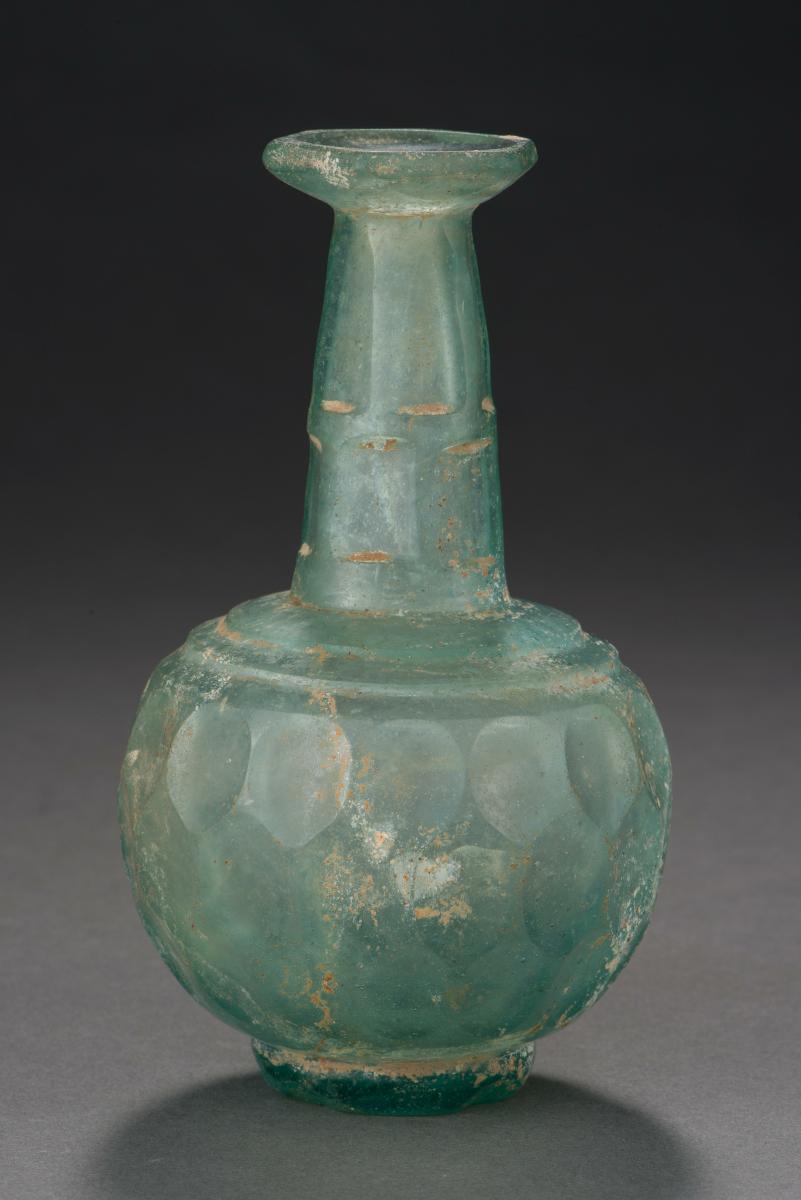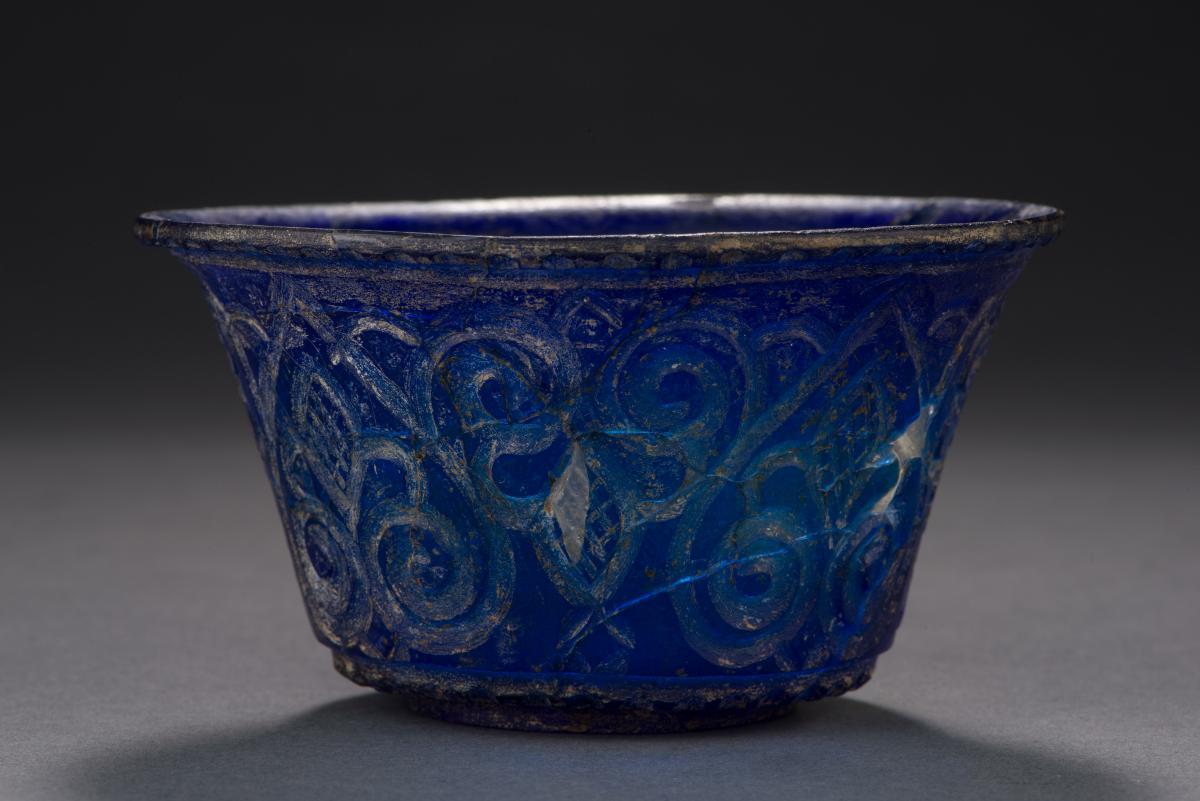Made of clear glass in a pale blue tone, this flask has a globular body and long tapering neck that opens up into a wide-rimmed hexagonal mouth. The decoration on the glass is created by a facet-cutting technique, where the curved surface of the glass has been ground to produce flat or slightly concave areas. The resulting honeycomb pattern references earlier Sassanian bowls, but the overall shape of the flask is regarded to be a distinctively Islamic form, and hallmark of Iranian glass production from the 8th to the 12th century.















